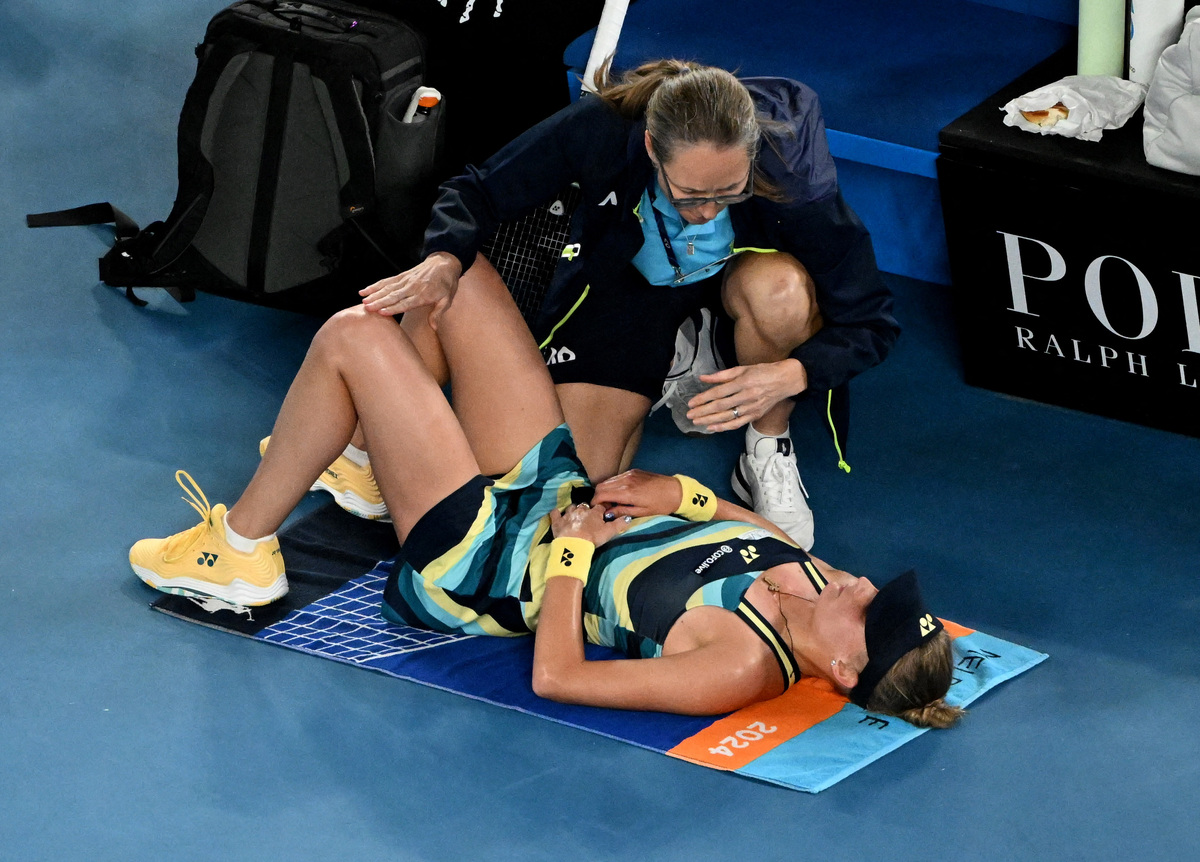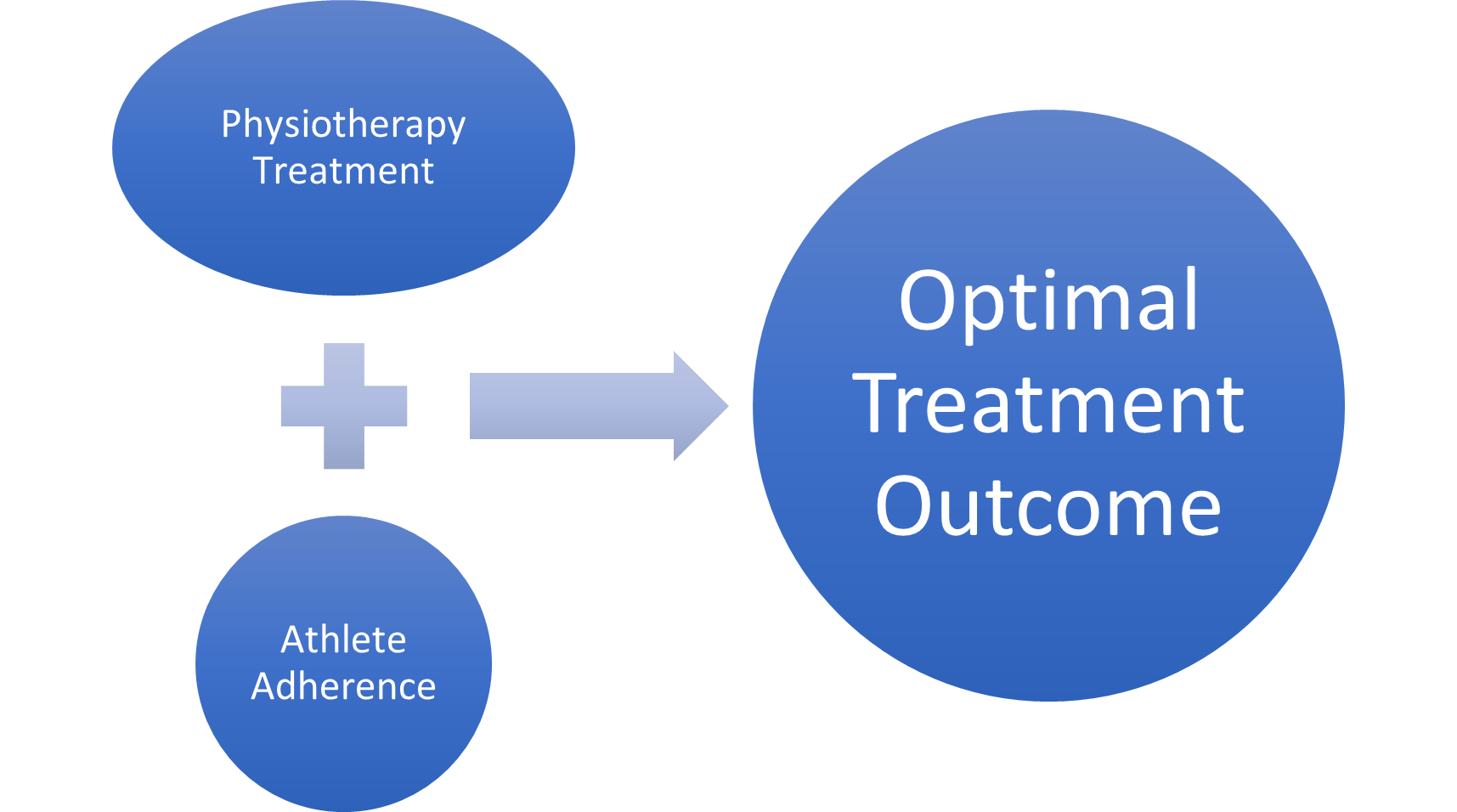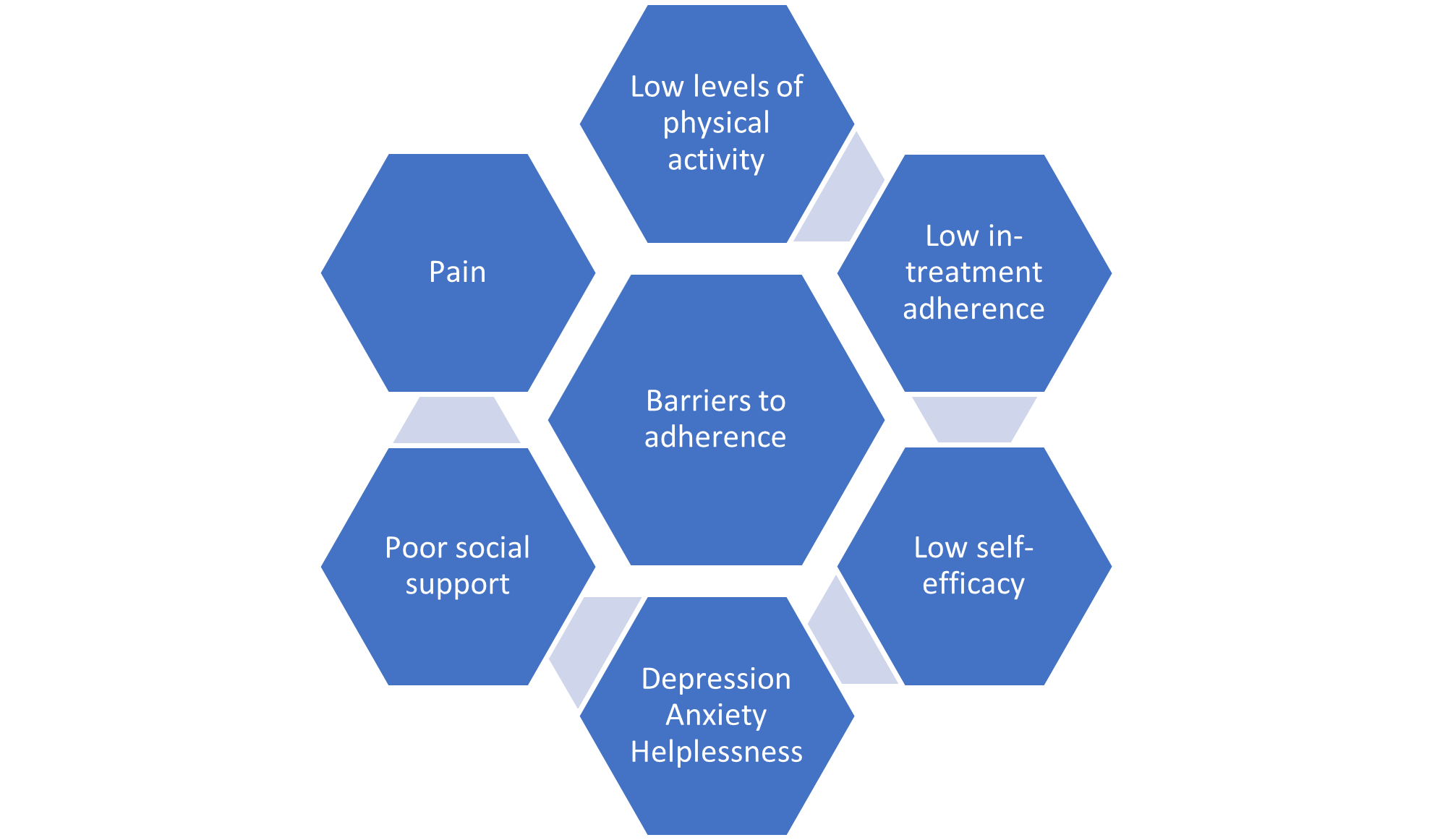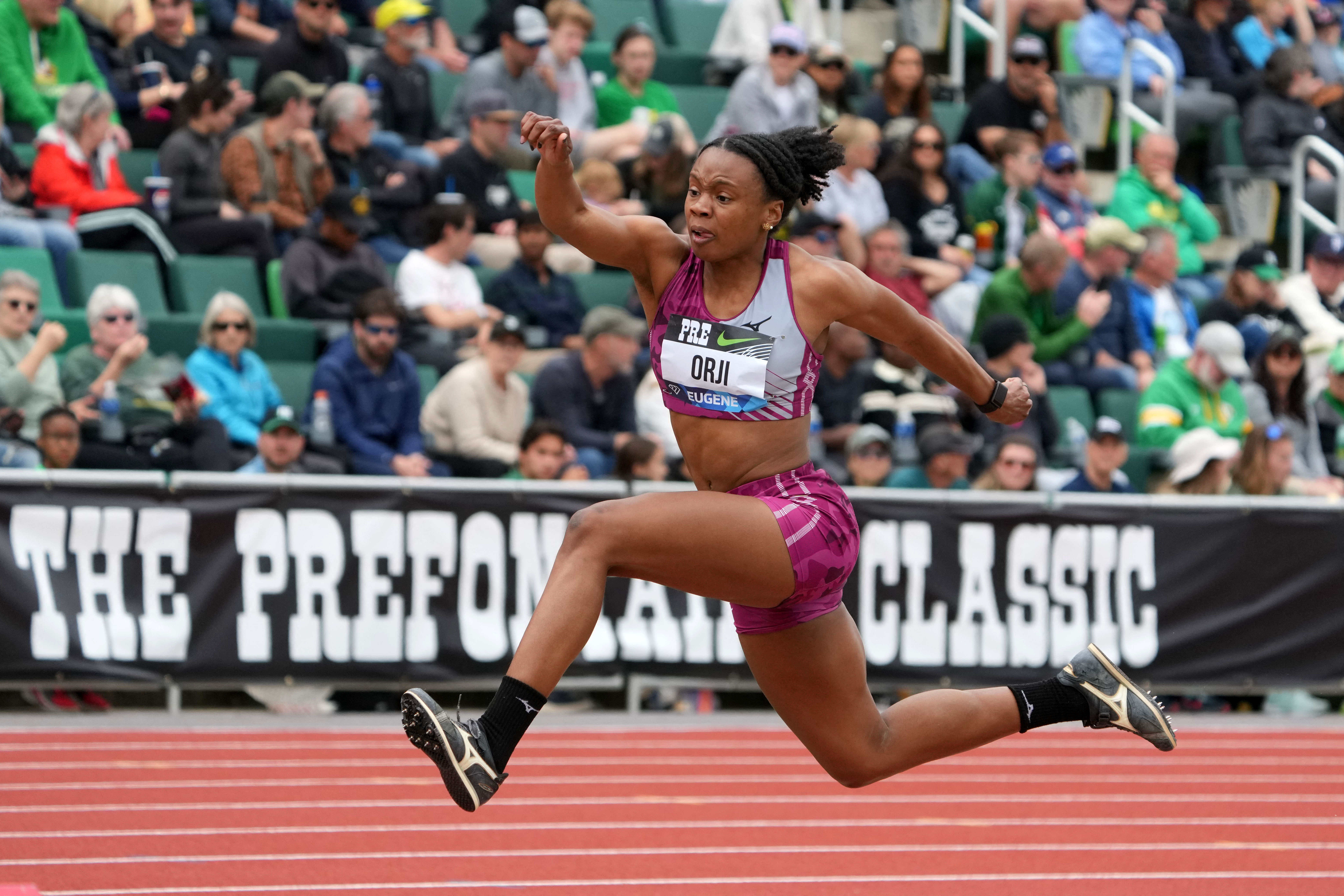You are viewing 1 of your 1 free articles
Athlete Adherence to Rehabilitation: It Matters
Rehabilitation is a critical part of the recovery process. However, the success of any program is dependent on athlete adherence. Lindsay Harris discusses how clinicians can foster and manage athlete adherence when recovering from injury.
Ukraine’s Dayana Yastremska receives medical attention during her semi-final match against China’s Qinwen Zheng REUTERS/Tracey Nearmy.
Clinicians struggle to find reasons why athletes fail to recover from their injuries despite there being no pathological reason for a poor outcome. They may be led to feel that their treatment program has not met the athlete’s needs, this being based purely on their physical presentation. However, clinicians must consider the athlete’s psychological and behavioral responses to their injury to understand treatment adherence.
The definition of adherence in physiotherapy is the extent to which the athletes undertake the clinic-based and home-based prescribed components of their physiotherapy program(1). Clinicians use adherence rather than compliance because it implies that the athlete has active voluntary involvement in the planning and implementation of the treatment (see figure 1). In contrast, compliance is abiding obediently by the practitioner’s prescribed treatment protocol(1). This would include the exercise prescription, activity modifications, and precautions in physiotherapy practice.
Self-managed, home-based physical rehabilitation therapy (HBPT) is an increasingly common element of rehabilitation for most acute and chronic conditions. Athletes’ adherence to these programs is key to therapeutic success and directly impacts rehabilitation outcomes(2,3). When clinicians identify that the athlete isn’t progressing as expected, they must not assume that the selected treatment approach is ineffective. They must assess if the program is inadequate to address their athlete’s needs or due to a lack of adherence (see figure 2).
There could be several reasons for a less-than-optimal adherence.
1. Avoiding the program altogether.
2. Continuing to expose themselves to aggravating activities despite activity modification advice.
3. Inadequate intensity during prescribed exercises.
4. Missing follow-up appointments.
Failure to attend physiotherapy and follow rehabilitation guidelines has long-lasting adverse consequences for the athlete. Like all forms of health care, physiotherapy is not immune to the problem of poor adherence(4,5). Up to 65% of athletes are either non-adherent or partially adherent to their home programs, and approximately 10% of athletes fail to complete their prescribed course of physiotherapy(5-7). Within physiotherapy, it is unclear which factors act as barriers to adherence. Identifying barriers to adherence will assist clinicians in managing athletes at risk of non-adherence and suggest methods to reduce the impact of those barriers.
Measuring Adherence
Several devices and apps (Fitbit and smart watches) provide access to measuring, tracking, and recording exercise performance. However, clinicians must remember that technology can be intimidating for some users, and technological competence can affect adoption and utilization. Clinicians can lower these barriers by educating athletes on how to set up and use any suggested technology. Furthermore, they can provide remote support to improve accountability by asking athletes to keep an exercise diary or follow up with them telephonically or via email. Recording athletes doing their exercises in the clinic and making these available to them also assists adherence through visual feedback, understanding, and reinforcement.
The Sport Injury Rehabilitation Adherence Scale (SIRAS) measures adherence behaviors during clinic sessions (see figure 3)(8). It is a three-item instrument that uses a five-point scale to assess:
1. The intensity with which athletes complete their exercises,
2. The extent to which they follow their practitioners’ advice and instructions during the treatment,
3. The athletes’ receptiveness to changes made during the rehabilitation session.
It is a great scale to use and come back to throughout the treatment and rehabilitation journey.
Barriers to Adherence
Pre-injury exercise level
Pre-injury exercise level is predictive of adherence to a rehabilitation program. For example, adherence is lower in individuals who are not physically active. Following any treatment regimen is harder when people are not used to exercising and maintaining an activity routine. Thus, they may prefer not to do the exercises altogether(9). Poor adherence to in-treatment exercise also shows poor adherence to HBPT(9). A lack of health literacy, misconceptions regarding treatment, and disbelief in the exercises’ effectiveness negatively affect adherence. Other factors may be at play, including poor exercise history, perceived poor health and frailty, low education, and readiness to change(10).
Self-efficacy
Low self-efficacy is also a barrier to adherence(11). Self-efficacy is the belief in one’s ability to succeed in specific situations or achieve specific goals. Self-efficacy is important as it influences our motivation, behavior, and emotions.
Mental health
Depression, anxiety, and helplessness are barriers to treatment adherence(12,13). Working within a multi-disciplinary team is key to managing these psychological barriers.
Pain
Pain can also influence mood. Therefore, controlling pain can assist in managing depression and anxiety. Some athletes fear that their pain may be aggravated by the treatment and rehabilitation program, and this fear can influence their adherence. Exercise has a potent effect on pain and can assist with managing injuries and reconceptualizing the framework that ‘pain equals harm.’
Social support
Social activity refers to the perception or actuality that someone is cared for, has assistance from others, and is part of a social network(12,13). Athletes with low social activity struggle to adhere to injury management. This can be emotional (e.g., nurturance), informational (e.g., advice), companionship (e.g., sense of belonging), tangible (e.g., financial assistance), or intangible (e.g., personal advice).
Environmental barriers
Many environmental barriers to exercise will lead to poor adherence. These are typically extrinsic barriers, including transportation problems, childcare needs, work schedules, lack of time, family dependents, financial constraints, convenience, and simply forgetting. The clinician should not dismiss any of these, as they are critical in the social and economic factors influencing human life. Injury is not just physiological harm. It directly and immediately impacts an athlete’s life beyond the sports arena.
Improving Adherence
It’s the practitioner’s responsibility to understand how barriers affect adherence. An ongoing and open communication channel between the practitioner and athlete is critical to success. Practitioners are responsible for finding creative solutions to overcome any possible misunderstandings. For example, athletes unfamiliar with exercise respond well to written or, even better, recorded video clips of themselves performing the exercises in the clinic with the clinician verbalizing all the exercise cues. Thus, the athlete can see and hear the program repetitively.
Some need more motivation than others and may respond to a reward-type system. For some, making a commitment via a written contract may assist their “buy-in” to the treatment. For others, keeping an exercise diary where they can see that they are both adhering and making progress may be the answer. Practitioners must communicate (listen), connect, and create optimal athlete-centered interventions.
There is no doubt that ongoing education that assists athletes in understanding the importance of rehabilitation and the reasons for it will improve their existing perceptions and enhance adherence. Practitioners must connect with athletes on a human level to create empathy. Once they understand the athlete’s point of view, they can develop solutions that meet their needs. Questions such as, “How comfortable are you at overcoming obstacles to exercise?” and “Are you able to keep going despite small rehabilitation setbacks?” can help identify an athlete’s mental state. Practitioners must constantly navigate the rehabilitation journey with the athlete as their perceptions, barriers, and motivations will change throughout the process. Setting realistic goals at each stage, planning along the way, and giving constant positive reinforcement will enhance an athlete’s self-efficacy.
Practitioners must encourage athletes struggling with depression, anxiety, and helplessness. Exercise assists mood, and thus, their commitment to rehabilitation will overflow to the elevation of their mood. Furthermore, practitioners can create exercise groups as knowing that others have similar conditions and limitations often encourages and brings a level of perspective into the rehabilitation journey. Working in groups adds to the athlete’s sense of belonging. The athlete-clinician relationship is vital in situations where social support is low. This relationship and ongoing positive feedback will enhance adherence(13). Furthermore, working with a multidisciplinary team also assists the athlete, as they know they have the whole team’s support.
Following injury, athletes typically perceive barriers to exercise (see figure 4). Injury rehabilitation is complex, but once practitioners break down the barriers and design meaningful solutions, they create an environment that enhances adherence. There is no perfect solution to improve athlete adherence. Practitioners must use their character traits and build empathetic relationships that match their athlete’s unique characters. Improving adherence is not a recipe. Practitioners must realize that adherence is key to a successful recovery story, and addressing each athlete’s potential barriers is essential to navigating each treatment and rehabilitation journey.
References
- Meichenbaum D and Turk DC (1987): Facilitating treatment adherence: A practitioner’s guidebook. New York: Plenum Press
- Ann Intern Med. 2005;142:776–785
- J Clin Pharm Ther. 2001;26:33
- Physiotherapy, 76: 575-578
- Sluijs E M, Kerssens J, van der Zee J and Myers L B (1998): Adherence to physiotherapy In Myers L B and Midence K (Eds.): Adherence to treatment in medical conditions Amsterdam: Harwood Academic Publishers, pp 363-382
- Physical Therapy 65: 1832- 1839
- New Zealand J of Physiotherapy 31(2): 60-66
- J of Applied Sport Psychology 8(Suppl): S161
- Physiotherapy Canada 2005;57(3):179–87
- Sports Medicine 1999;28(6):397–411
- J of Sport Rehabilitation 2005;14(2):150–67
- Health Education Quarterly 1993;20(1): 83–95
- Physical Therapy 1993;73(11):771–82 (discussion 783–86)
Newsletter Sign Up
Subscriber Testimonials
Dr. Alexandra Fandetti-Robin, Back & Body Chiropractic
Elspeth Cowell MSCh DpodM SRCh HCPC reg
William Hunter, Nuffield Health
Newsletter Sign Up
Coaches Testimonials
Dr. Alexandra Fandetti-Robin, Back & Body Chiropractic
Elspeth Cowell MSCh DpodM SRCh HCPC reg
William Hunter, Nuffield Health
Be at the leading edge of sports injury management
Our international team of qualified experts (see above) spend hours poring over scores of technical journals and medical papers that even the most interested professionals don't have time to read.
For 17 years, we've helped hard-working physiotherapists and sports professionals like you, overwhelmed by the vast amount of new research, bring science to their treatment. Sports Injury Bulletin is the ideal resource for practitioners too busy to cull through all the monthly journals to find meaningful and applicable studies.
*includes 3 coaching manuals
Get Inspired
All the latest techniques and approaches
Sports Injury Bulletin brings together a worldwide panel of experts – including physiotherapists, doctors, researchers and sports scientists. Together we deliver everything you need to help your clients avoid – or recover as quickly as possible from – injuries.
We strip away the scientific jargon and deliver you easy-to-follow training exercises, nutrition tips, psychological strategies and recovery programmes and exercises in plain English.















